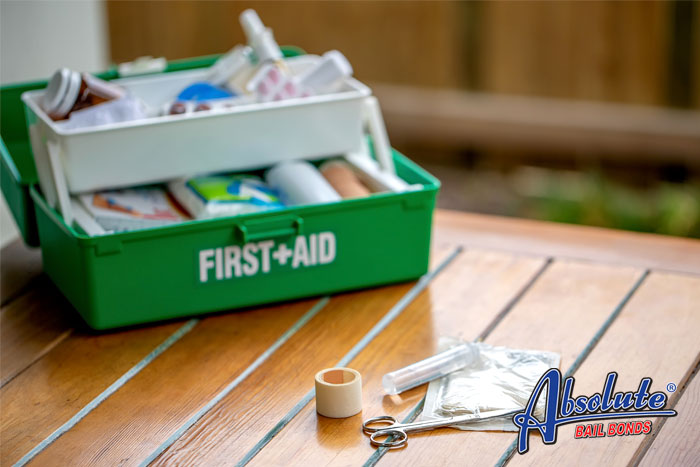
Laws Every California Pet Owner Should Know
Owning a pet is a wonderful experience. In exchange for providing for their physical needs, your pet gives you unconditional love and great joy. Pet owners are usually healthier and happier than California residents who don’t own pets.
While there are lots of perks associated with owning a pet, there are also several California pet laws all pet owners need to know.
Your Dog Must Be Properly Licensed
If you own a dog, it has to be licensed. Failing to stay on top of your dog’s license could result in your county charging you a fine. The only dogs who are exempt from the state’s licensing laws are puppies who haven’t turned four months old.
All Dogs Have to be Up to Date With Their Rabies Vaccination
If you own a dog, you’re responsible for making sure it has had a rabies vaccination. In some areas, they have to get a rabies vaccination every year. In other areas, you can go for three years between the vaccine. The vaccine has to be given by a certified vet. Without proof of the rabies vaccination, you can’t purchase a dog license.
You Can’t Abandon Your Pet
Once you accept responsibility for your pet, you are expected to keep the pet for the rest of its life. If you can’t you need to rehome it. You’re not allowed to simply abandon it. If you’re caught abandoning an animal, you will face animal cruelty charges.
You’re Responsible for your Pet
You’re expected to be in control of your pet at all times. If your dog ruins someone’s personal property or bites someone, it’s your fault. Civil charges can be brought against you.
California’s Spay/Neuter Laws are Changing
California lawmakers have become increasingly aware of the pet overpopulation problem in their state. They hope that tougher spay/neuter laws will reduce the number of strays animal control deals with each year. All shelters are required to provide proof that the animals they’re putting up for adoption have been spayed or neutered.
California’s pet laws are constantly changing. If you own any type of pet, it’s in your best interest to routinely review both local and state pet ownership laws.

The Right to Remain Silent
We’re all familiar with the Miranda Rights, which basically grants us the ability to not tell the police anything if we’re arrested. While we’ve heard thousands of television cops recite the famous words “you have the right to remain silent” few of us actually know what that means.
The History of the Miranda Rights
The Miranda Rights take their name from Ernesto Arturo Miranda. He was arrested in 1963 and placed in a line-up. The victim selected Miranda. When the police questioned him, he confessed to the crime. It looked like an open and shut case, when in fact, it turned into a case that forever changed police procedure in the United States.
After Miranda was found guilty of raping and kidnapping, his attorney argued that the case should have been thrown out because Miranda was never told that he had the “right to remain silent.” Instead of ignoring the claims, the case, along with three similar cases, made it to the Supreme Court. In 1966, the Supreme Court ruled that in situations like the one Miranda found himself in, the police can’t use a confession unless the accused has first been advised of their right to remain silent and reminded that if they confess, the confession can be used against them during the court case.
What the Right to Remain Silent Really Means
The right to remain silent doesn’t mean that the police can’t question you. The right to remain silent is designed to provide you with a layer of protection in two different circumstances.
If you are in court and under oath, the right to remain silent means you aren’t legally required to say something that could incriminate you in criminal activity. If you do say something, the prosecution can use the confession, even an inadvertent one, against you. In this type of situation, the right to remain silent is commonly referred to as Taking the Fifth.
The second situation where the right to remain silent comes into play is if you’re being deposed by the police. They’re allowed to question you, but you don’t have to say anything that could be considered a confession to a crime.
When do the Miranda Rights Come into Play?
The police are supposed to read you your Miranda Rights as soon as they make a move to take you into custody. Being taken into custody means that you don’t have the ability to leave when you decide that you’ve had enough. You’re right to remain silent kicks in as soon as the police put handcuffs on you, which is why it’s important to remain cool, calm, and collected while they drive you to the police station. You don’t want to lose your temper while you are in the back of the car that could be used against you.

Understanding California’s Labor Laws and How They Impact your Paycheck
It doesn’t matter if you’re an employee or an employer, it’s important to understand California’s labor laws. The problem most people encounter is that the state hasn’t gone out of its way to break these laws down in a way that is easily researched or understood.
Minimum Wage
California is a bit peculiar because instead of creating a flat minimum wage that covers everyone, California has two different minimum wages. The first is $13. The second is $12. The amount of minimum wage an employer pays is based on the size of the business.
The problem with this system is that it urges California employers to keep the number of employees under 24 which can often discourage them from trying to expand their business or to take on additional employees during the times that they are busy.
The extra $1 an hour gives large employers an edge when they’re hiring. Getting paid an extra $1 an hour is a big enough difference that it can cause individuals who are in the process of looking for a job to automatically reject any business that isn’t required to pay the full $13 an hour in the minimum wage.
Further complicating the process is that many cities and counties have a local minimum wage requirement. A perfect example of this is San Francisco where the minimum wage is $15 an hour.
The State mandates that anyone who works over 40 hours a week must be paid an overtime rate that is 1.5 times their regular hourly amount.
Paid Training
There was a time when some businesses felt that they didn’t have to pay employee trainees. This made it impossible for novice employees to earn a living during the training phase, especially if the training took weeks to complete.
California law states that if an employee is getting trained and is 20 or younger, the employer must pay them at least $4.25 an hour. The maximum amount of time the employee can be paid a training wage is 90 days.
Minimum Wage and Students
California lawmakers recognize that many full-time students have to work, but they also realize that working around a student’s schedule can create some interesting problems for employers. In an attempt to encourage employers to hire full-time college and high school students, the employer only has to pay 85% of the minimum wage. This amount is good for 20 hours of work per week.
Full-time high school or college students who work part-time may be paid 85% of the California minimum wage (as little as $11.05 per hour) for up to 20 hours of work per week at certain employers (such as work-study programs at universities).
Employers are required to post wage requirements in a highly visible area.
In addition to a minimum wage, your employer also has to meet California OSHA safety standards and provide time for state-mandated breaks.

Staying Safe During California’s Wildfire Season
Each year, California has wildfires that attract national and sometimes even international media attention. The various media channels like to talk about what might have caused the wildfire, how big it’s gotten, and how teams are desperately working to fight it, as someone who lives in California, you’re first priority is doing everything possible to keep yourself and your loved ones safe during this year’s wildfire season.
Prepare Early
Don’t wait until you can hear the roar of the wildfire bearing down on you to start preparing. Wildfires spread quickly and they can also start quickly. Don’t wait until you’re in a high-risk area to start preparing for a wildfire. As soon as you move to California, you need to create start preparing for the possibility of a fire.
Early California fire preparations include:
- Turning your property into a defensible space
- Having an evacuation plan in place
- Keeping your vehicle prepped in case you have to evacuate
- Having a bag packed with life essentials in case you need to evacuate
- Making sure your personal property is covered by property insurance
Creating a Defensible Space
You want to surround your property with a defensible space. This space serves as a buffer between an approaching fire and your home. The space shouldn’t have any items or vegetation that’s likely to burn. The defensible space should extend at 30 feet past your house.
Packing Evacuation Supplies
You don’t have enough room in your car for all of your personal belongings. Limit what you need to one bag per person. Most of the time you can keep his bag in your closet, but if it looks like there is a chance that you’ll have to evacuate, stow the emergency fire bag in your car. Fire moves quickly so each second you save is important.
Items you should have in your emergency fire evacuation bag include:
- A change of clothing
- Cash/credit cards
- An extra charger for your cell phone
- The contact information for your insurance company
- A first aid kit
- Any medication you take
- Water
- Food
- A flashlight
Keep Tabs on your Neighbors
Fire doesn’t care who it hurts. It’s up to you to keep in touch with your neighbors and make sure that they’re able to protect themselves from a wildfire. Whenever possible, offer to help them evacuate. Taking a few seconds to contact your neighbor’s emergency contact, or helping load up their car helps save lives.
Prepare your Pets
You can’t afford to forget about your pets during an emergency fire evacuation. They can’t fend for themselves. You should also be prepared for even the most docile pet to become stressed as you evacuate. They might not understand exactly what is going on, but they do know that a fire is approaching and that you’re stressed.
Lock your pets in a different part of the house while you prepare to evacuate. This prevents them from bolting out the door and getting lost while you’re packing up your vehicle. When you’re ready to load your pets in the car keep them leashed or in a carrier. Don’t assume they will just follow you. Each time you stop the car for gas, make sure your pets are restrained before you get out of your car.
It’s a good idea to get your pet micro-chipped and to write its name and your phone number on their collar before you evacuate.
Before you drive away from your home, take a couple of seconds to double-check that all people and pets are loaded in your car.
Even though it’s hard to stay calm when you’re evacuating, you really need to. The calmer you can keep yourself in this situation, the smoother the evacuation will go.

California Earthquake Survival Tips
California is known for its earthquakes. Unlike wildfires which can be somewhat predictable and avoidable, there’s never much warning before an earthquake occurs. Even with the surprisingly accurate MyShake earthquake phone app you usually have less than a minute to prepare yourself for the tremor.
Early preparation and common sense is your best line of defense when it comes to surviving a California earthquake.
Keep Your Home in Good Repair
Routinely go through your home and any outbuildings and make sure that they are earthquake ready. The house met the current earthquake building guidelines when it was constructed, but it’s up to you to make sure that it stays earthquake ready. The best way to make sure your home remains standing during an earthquake is by staying on top of all home repairs.
Secure Your Space
At least once a week, go through your entire house and make sure it’s earthquake-proof. Make sure there is enough room in closets for you to fit into the small space during an earthquake. Double-check that you haven’t placed anything on a high shelf where it could fall off and hit you during an earthquake.
Create a Disaster Plan
Creating a disaster plan for an earthquake isn’t easy. You have no way of knowing where you or the rest of your family will be when an earthquake takes place. What you can do is arrange a place where everyone will meet following a large earthquake. You can also make sure that your entire family has a communication plan in place that will allow you to connect with one another after the earthquake.
Have Emergency Supplies on Hand
Create small emergency packs and store them throughout your home. The packs should contain non-perishable food, first aid supplies, a flashlight, batteries, and water. You should keep at least one of these packs in each of your rooms as well as in your car.
Purchase Earthquake Protection
Make sure you’re insured against an earthquake. This insurance means you’ll get reimbursed if your home is destroyed during the earthquake, making it possible for you to start over.
Lend a Helping Hand
Once you’ve successively survived a California earthquake, it’s time to help others. Check on your neighbors and make sure they’re okay. Offer to shelter to those who need it. Volunteer with earthquake survival groups. The sooner everyone pitches in to help, the sooner the state will recover from the earthquake.

Can You Force Your Employees to Work During a Government Ordered Lockdown
Covid-19 has created some big legal questions that no one really considered prior to the pandemic hitting the United States in March. One of the questions both employers and employees are asking is if employees can be required to work during the government ordered lockdown.
The answer isn’t as straight forward as most people might assume it is.
Working From Home
If it turns out that a business’s employees have the ability to work from home, they can be told that they have to work during the government lockdown. One of the surprising things about the pandemic is how many businesses who thought they needed to have their employees come in every single day are finding that it isn’t necessary at all. Some have even reported that having employees working from home has increased productivity and they’re exploring if they should simply continue the work at home option even after the pandemic ends.
If You’re an At Risk Employee
The simple reality is that some people are at a much higher risk of both contracting COVID-19 and being hospitalized with their conditions. The good news is that the Americans Disabilities Act does provide some protection for these employees. As long as they have a recognized and registered health problem that puts them at risk for COVID-19, the employee has the right to request that their employer explore other options. This can include placing them in a different area where they’re better able to social distance from other employees, moving them to a new position, or granting a leave of absence.
If you don’t have a condition that’s recognized by the ADA, your employer may have the right to insist you continue to work.
The Families First Coronavirus Response Act
The Families First Coronavirus Response Act was created to make it a little easier for employees to tell their employers that they wouldn’t be working during the lockdown. The law is designed to provide employees with some leverage against employers who want them to work during the lockdown. The law is specific to COVID-19 and provides additional assistance with things like food assistance, healthcare assistance, and even help getting unemployment if the employee decides that their being unfairly forced to work.
It’s important to note that the Families First Coronavirus Response Act is a temporary measure and will end on December 31, 2020.

What to do When the Police Ask for Camera Footage
Over the past 10 or 15 years, cameras have become a major part of our daily lives. They’re on our phones, in our homes, built into doorbells, and even mounted on the dashboards of our cars. We usually don’t give them a second thought until the police request the footage. That’s when we suddenly start to wonder exactly what our rights are.
Can the Police Request Camera Footage Without a Warrant?
If you’re wondering if the police can ask to see the footage one of your cameras has captured even when they don’t have a warrant, the answer is yes. Where things get murkier is when you’re trying to figure out if you have to grant their request.
Do You Have to Hand Your Cameras to the Police?
If the police suspect that the camera on your phone, dashboard, or home security system contains information that pertains to a crime they’re investigating, they are allowed to take it, even if you don’t willingly hand it over. They are required to provide you with a receipt. What the police aren’t allowed to do is simply flip through the phone or watch any of the videos without permission. There are two ways they can obtain this permission. The first is if you tell them that you don’t mind. The second is by getting a warrant to inspect the camera.
The problem with camera footage is that if the police find incriminating evidence, they can use it against you.
RING Doorbells and the Police
If you have a RING doorbell, you should know that it’s possible the police may already have access to the footage the camera has captured. The brand is actively marketed to the police and some police stations have even been given the doorbells which they hand out to citizens. Amazon, who owns the company that manufactures RING doorbell does this because they are trying to cut down on delivery package thefts. It’s a good idea unless the police suspect you of a crime. Footage that is less than 60 days old and has been uploaded to a network cloud can easily fall into the police’s hands, even without your permission or a warrant.
Tony Botti, who is a Public Information Officer with the Fresno County Sheriff’s office spoke about this issue. “If we ask within 60 days of the recording and as long as it’s been uploaded to the cloud, then Ring can take it out of the cloud and send it to us legally so that we can use it as part of our investigation,” Tony said. “The consumer knows what they’re getting into. If you’re a good upstanding person who is doing things lawfully, nobody has concerns.”
When it comes to camera footage and the police, it’s in your best interest to delete any potentially damaging photos or videos that you’ve already recorded and to turn your camera off if you’re worried that it can ever be used against you during a criminal investigation.

Found a Lost Pet? Here’s What you Have to Do
It happens all the time. A dog appears in your yard or you find a cat while your out on a walk. Even though the animal isn’t yours, you invite it into your home. At this point, you find yourself in the crossroads of an ethical decision. Do you keep the lost pet or do you make an effort to track down the owners?
Protocol for Finding Lost Pets
While you might think it’s up to you to decide if you want to keep the pet or find it’s owner, California lawmakers think differently. Many lawmakers are animal lovers who have gone through the agony of having a cherished pet disappear. In an effort to help lost pets reunite with their devastated owners, the lawmakers passed legislation that requires that you report the found animal within 48 hours of finding them.
You can report the lost animal to animal control, the local police, or a local vet clinic. This gives the owner a chance to contact the same organizations as they attempt to track down the missing pet. In most cases, as soon as you contact animal control or the vet clinic, you’ll find the owner has already reported the missing animal. At that point, the only thing left for you to do is arrange for the owner to pick up their missing pet.
Don’t be surprised if you’re told that you have to bring the pet in and have it scanned for a microchip.
What Happens if you Don’t Report a Found Pet
Not reporting that you’ve found a pet within 48 hours means you’re facing a misdemeanor charge. The good news is that if you have reported the found pet and no one claims them, you are free to keep the pet.
Tips for Reuniting Found Pets with their Owners
It’s is always in your best interest to reunite a found pet with its owner. This can be a problem if it doesn’t have a microchip. The good news is that you’re not out of options. In addition to contacting the local shelters, animal control, and vet clinics about the animal, you should also post it in local social media groups. These groups are often the first place devastated owners go when they’re trying to find their missing pet.



